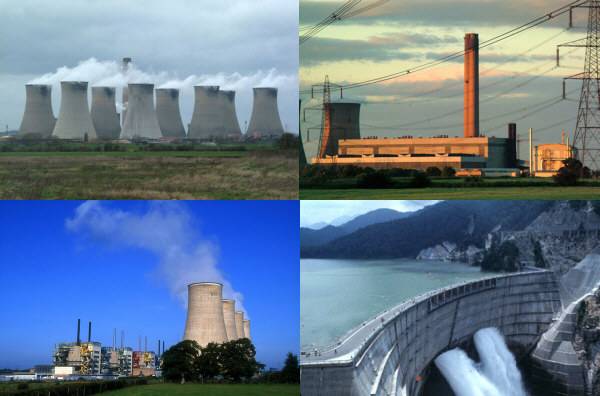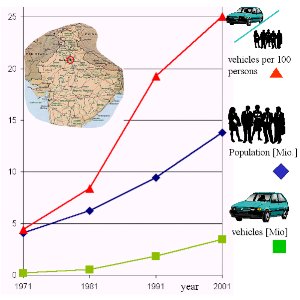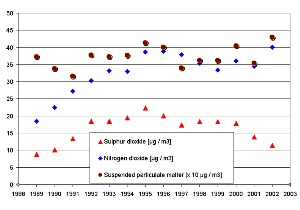 > English > Climate Encyclopaedia > Climate in Cities > more > 1. Air Pollution > - Fuel Combustion
> English > Climate Encyclopaedia > Climate in Cities > more > 1. Air Pollution > - Fuel Combustion
|
Climate in citiesRead more |
Fuel combustion during energy production and transportationBurning fuels such as coal, oil, gas and petrol to produce energy and to power vehicles causes the emission of many different chemical species into the atmosphere. Each fuel delivers a slightly different cocktail of pollutants into the air. |
|
Most of the electricity produced worldwide results from the combustion of oil, coal and natural gas. Natural gas (methane, CH4) is a relatively clean fuel and coal is the dirtiest. Large amounts of both gases and particles are emitted into the air when coal is burnt in power stations. The gases emitted include sulphur dioxide (SO2), nitrogen oxides (NOx), carbon monoxide (CO) and carbon dioxide (CO2) and the dust contains heavy metals such as lead (Pb), zinc (Zn) and cadmium (Cd). Burning fossil fuels in Europe in 1998 resulted in emissions of about 5,670,000 thousand tonnes of CO2 into the air. Coal contains more sulphur than the other fossil fuels but the amounts vary significantly depending on the origin of the coal. Coal combustion is the largest source of SO2 to the atmosphere and these emissions contribute significantly to the acid rain problem.
|
 |
|
1. Energy production and air pollution
|
|
Some countries do not rely completely on fossil fuels to produce electricity. This generally leads to an improvement in air quality on both a local and on a global scale. For example, around 65% of the electricity produced in France comes from nuclear power plants and in Norway, over 90% comes from hydroelectric power plants.
|
 |
|
2. Urban traffic and air pollution. Source: www.freefoto.com |
Particles not only come from the combustion of fossil fuels but also from the road surface and from the car tyres and the brakes. As well as containing harmful chemicals, these tiny particles travel deep into our lungs when we breathe and cause respiratory problems. Most cars are now equipped with catalytic converters which significantly reduce the amount of pollutants being emitted. However the numbers of cars globally is still rising and vehicles are still an important source of air pollution. The catalysts in catalytic converters are made up of heavy metals including platinum, palladium and rhodium. Increasing numbers of cars and therefore catalytic converters mean that levels of these metals are increasing in the atmosphere. Their impact on the natural environment is still unknown.
|
|
|
Aeroplanes are another important source of atmospheric pollution. One jet plane emits as much pollution as 7,000 cars over the same time period. Unlike cars, aeroplanes emit their pollutants into the higher atmosphere and may, as a result, damage the stratospheric ozone layer.
|
 |
|
5. Air transport and air pollution. Source: www.freefoto.com |
|
Related pages: Read how air-planes deliver the pollution to the higher atmosphere in: |
|
About this page:Authors: Pawel Jezioro, Anita Bokwa - Jagiellonian University - Cracow / Poland
|


